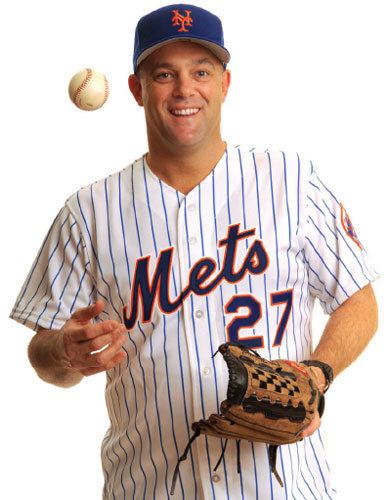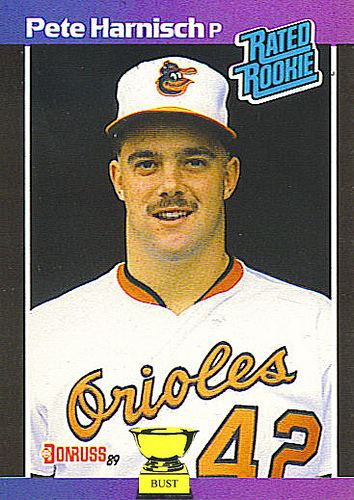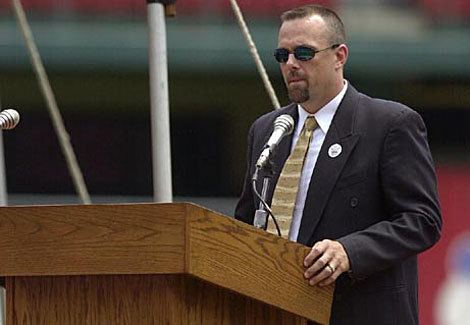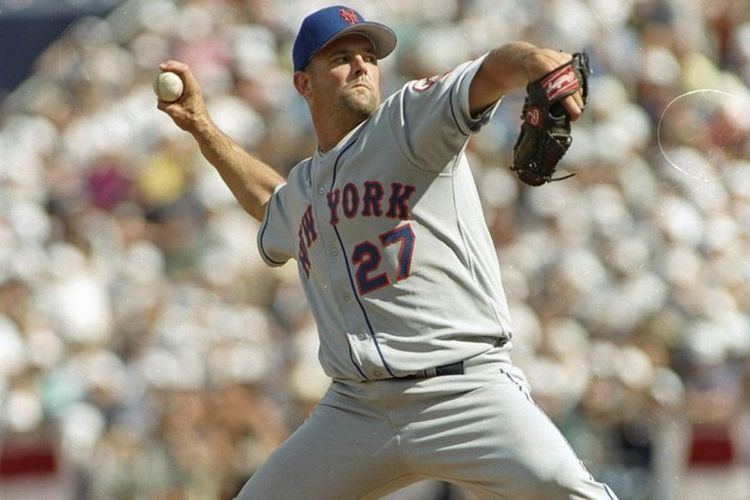Win–Loss Record 111–103 Role Baseball player Name Pete Harnisch | Strikeouts 1,368 Earned run average 3.89 | |
 | ||
Pete harnisch made fun of for baggy uniform houston astros
Peter Thomas Harnisch (born September 23, 1966) is a former Major League Baseball right-handed starting pitcher.
Contents
- Pete harnisch made fun of for baggy uniform houston astros
- Pete harnisch interview 14 yr mlb vet mlb all star
- Baltimore Orioles
- Houston Astros
- New York Mets
- Cincinnati Reds
- Post playing career
- Career stats
- References

Pete harnisch interview 14 yr mlb vet mlb all star
Baltimore Orioles

Harnisch studied accounting, and was a star pitcher at Fordham University, compiling a 21–3 college record, 2.29 earned run average and 213 strikeouts in 204 innings pitched. He was a supplemental first round pick (27 overall) for the Baltimore Orioles in the 1987 Major League Baseball draft. Just over a year after signing with Baltimore, Harnisch made his major league debut as a September call-up in 1988. He was 0–2 in two starts with a 5.54 ERA.

Harnisch spent two more seasons with the Orioles, splitting both seasons between Baltimore and their triple A affiliate, the Rochester Red Wings. Following the 1990 season, he, Curt Schilling and Steve Finley were traded to the Houston Astros for first baseman Glenn Davis.
Houston Astros

Harnisch suffered from a lack of run support upon his arrival in Houston. Despite leading the National League with a 2.22 ERA, his record stood at 5–7 at the 1991 All-Star break. NL manager Lou Piniella added Harnisch to his squad regardless of his losing record, and Harnisch pitched a scoreless sixth in the NL's 4–2 loss. On September 6, 1991, Harnisch struck out three batters on nine pitches in the ninth inning of a 3–1 win over the Philadelphia Phillies. Harnisch became the 17th National League pitcher and the 26th pitcher in Major League history to accomplish this feat. Harnisch went 7–2 after the break to end the season at 12–9. He led the league with a .212 batting average against and 7.020 Hits per nine innings pitched.
Astros manager Art Howe named Harnisch his 1992 opening day starter. Harnisch pitched well, giving up just two runs in the eighth to the Atlanta Braves, however, the Astros were held to just two hits by Braves starter Tom Glavine, and Harnish took the loss. His best season was 1993, when he went 16-9 with a 2.98 ERA and 185 strikeouts while tying the Chicago White Sox's Jack McDowell with a major league leading four shutouts and leading the NL for a second time with a .214 batting average against and 7.070 hits allowed per nine innings pitched.
A torn tendon in his pitching arm caused Harnisch to miss the entire month of June 1994, and limited him to just seventeen starts all season. Following the season, he was traded to the New York Mets. In four seasons in Houston, Harnisch compiled a 45-33 record and 3.41 ERA.
New York Mets
Harnisch's first season in New York City did not go well, as he went 2–8 with a 3.68 ERA in eighteen starts. His record improved to 8–12 in 31 starts in 1996, although he drew an eight-game suspension for his part in a brawl with the Chicago Cubs on May 11.
Harnisch quit chewing tobacco during Spring training 1997. Shortly afterwards, he complained to Mets trainer Fred Hina of sleeplessness and a lost appetite. Hina prescribed sleeping pills for Harnisch prior to his opening day start for the Mets against the San Diego Padres. After pitching five scoreless innings, Harnisch was pulled after starting the sixth inning by giving up consecutive home runs to Chris Gomez, Rickey Henderson and Quilvio Veras. He was pulled from his next scheduled start on April 6, and sent back to New York for tests. Following which, he received a diagnosis of clinical depression.
He revealed his condition in a conference call with sportswriters later that month, and began a rehabilitation program that kept him from the Mets' line-up for four months. He returned to the Mets on August 5, pitching six innings and giving up two runs to the St. Louis Cardinals at Shea Stadium. He was, however, far less effective in his next three starts, and was 0–1 with an 8.24 ERA when manager Bobby Valentine moved him into the bullpen.
Cincinnati Reds
Harnisch made three starts and one relief appearance for Milwaukee, and signed with the Cincinnati Reds as a free agent following the season. He enjoyed something of a renaissance with the Reds in 1998, going 14–7 with a 3.14 ERA for a team that went 77–85 and finished in fourth place in the National League Central. The club improved considerably in 1999 with Harnisch leading the club in wins (16), innings pitched (198.1) and shutouts (2). His sixteenth victory came on October 3 in the 162nd game of the season against the Brewers to improve his club's record to 96–66, and end the season tied with the Mets for the National League's wild card. The Mets won a one-game playoff at Cinergy Field the following day.
Harnisch spent two more seasons in Cincinnati. Injuries limited him to just seven starts in 2001. After sitting out the entire 2002 season, he attempted a comeback with the Reds' triple A affiliate, the Louisville Bats in 2003, but was unsuccessful.
Post-playing career
In November 2012, Harnisch was hired by the Los Angeles Angels of Anaheim to be a roving pitching instructor.
Career stats
Harnisch hit two career home runs, both as a member of the Cincinnati Reds. He currently lives in Colts Neck, New Jersey with his wife, Donna, and two sons, Jack and Nick.
